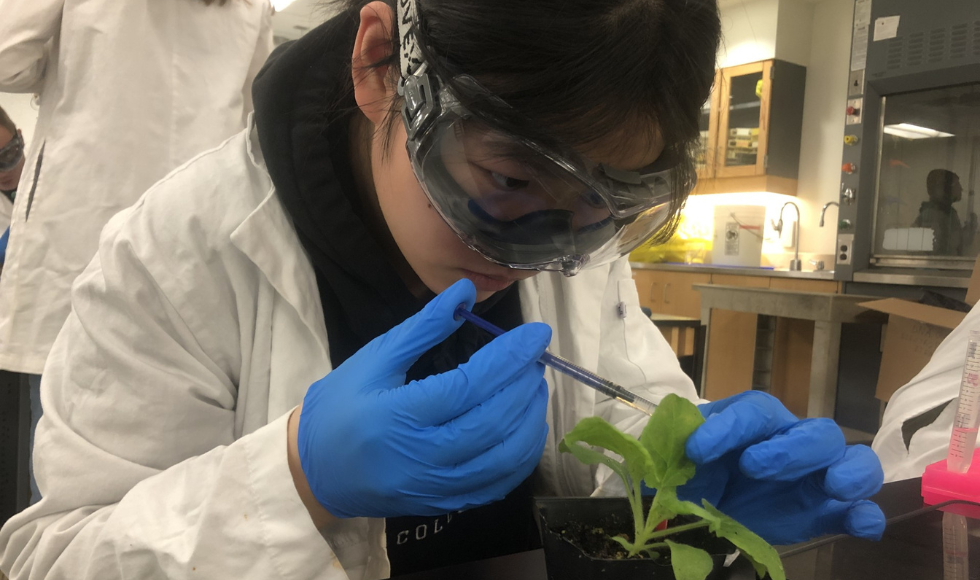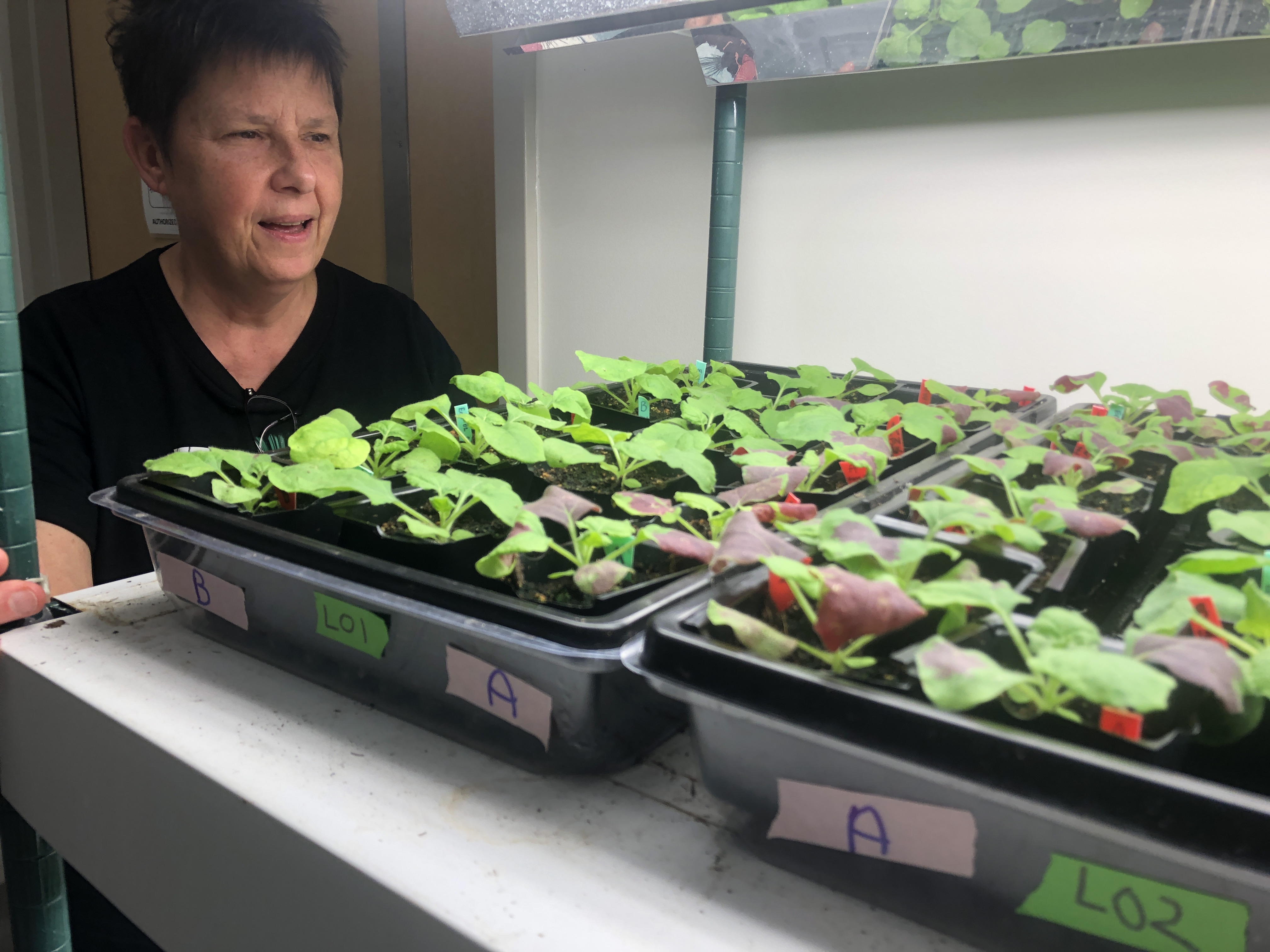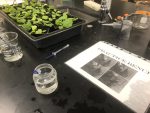Botanical alchemy: Undergrads study how plants create vaccines

December 15, 2023
It’s a two-week experiment that was more than a decade in the making.
Biology professor Robin Cameron had long wanted students in her Plant Biodiversity and Biotechnology course to learn first-hand how plants can be used to create vaccines.
The idea of using plants as a faster and cheaper way to mass produce vaccines or therapeutic antibodies has been around since the 1990s, when transgenic corn, soybean and canola plants were first grown commercially in North America.
“Not everything that I teach in class can be illustrated in a lab,” says Cameron.
“But this was a concept and technique that I really wanted to bring to life for my students. I wanted them to learn about it in class and then try doing it and seeing it for themselves in the lab.”

But how to make that happen was the challenge: Students need to use a fluorescence microscope to view a protein — an expressed fluorescent reporter protein, to be preceise — that would represent the vaccine.
But the lab only has two such microscopes on hand for undergraduates, and with more than 100 students in a three-hour lab, Cameron wasn’t sure how to run the experiment.
Then she read a journal article about visible reporter genes. Instead of expressing a protein that can only be seen through a fluorescence microscope, plants could be made to express enzymes from beets, which produce a pigment that’s visible on leaves without using a microscope.
Just like during vaccine production in plants, students used the natural genetic engineer Agrobacterium to inject the genes for the beet enzyme into plant cells. Those genes then produced beet pigments that then changed the colour of the plants’ leaves.

Cameron worked with graduate student Garrett Nunn and postdoctoral fellow Fathy Elgebaly to test the system.
Technician Colleen Murphy and instructional assistant Scott Hughes then worked out the experiment for more than 100 students over the course of two weeks in the Argo Lab in the Burke Science Building.
“Colleen and Scott were a huge help in making this experiment possible,” says Cameron.
She hopes the lectures and hands-on lab experiments will inspire students to consider a career in plant biology and agriculture.
“We need to feed the world and that’s becoming more and more of a challenge because of the climate change.”


